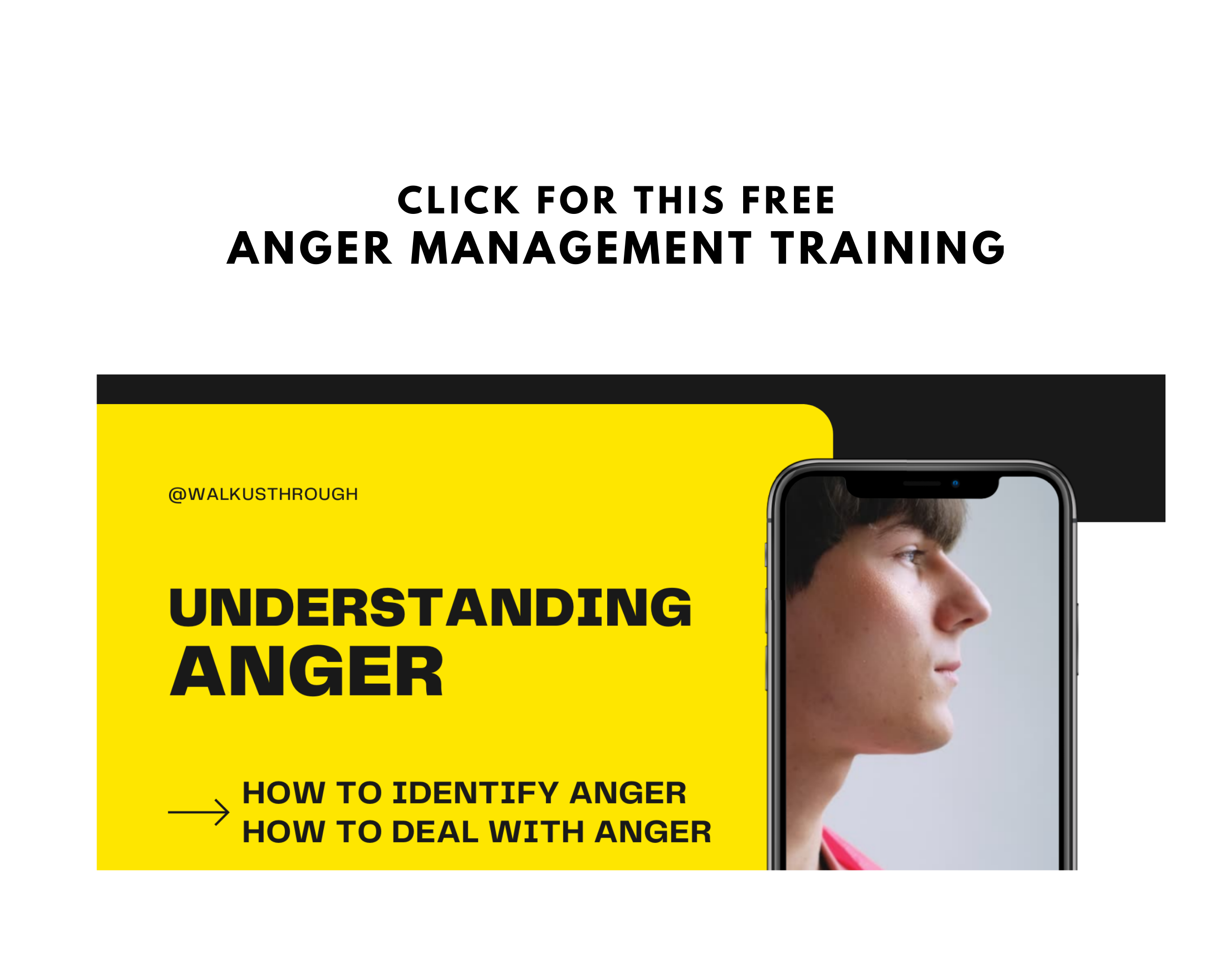3 Surefire Ways to Calm Down When Angry

Have you ever been so angry that you said or did something you regret? Sometimes after an anger outburst there is an opportunity to apologize and make amends, but that depends on the strength of your relationship with the person(s) hurt by your angry words or actions. It also depends on the frequency or the intensity of the anger outbursts, i.e., how often you get angry and how strongly you act out in anger.
There have been more and more incidents of extreme hostility and rudeness demonstrated by people on airplanes, in restaurants, and in communities at large. Due to post-pandemic, financial and relationship stressors, people are finding it extremely difficult to tolerate frustration and accommodate others with opposing points of view.
Consequently, it is helpful to know effective ways of calming yourself when you get angry so that you stop yourself before saying or doing something you later regret. This article lists 3 techniques that work to calm you down so that you can gain full control of your anger emotion. Let's start by looking at the definition of anger.
What is Anger?
Anger is an emotion that has the essential feature of antagonism toward something or someone you feel has wronged you. The Oxford Dictionary defines anger as a strong feeling of annoyance, displeasure or hostility and this definition highlights that anger can range from a less intense emotion such as annoyance, to a more intense emotion such as hostility or even rage. For a detailed explanation of what anger is, how it affects you, and how to fix the anger problem see this FREE Anger Management training.
3 Effective Techniques to Calm Down When Angry
As noted earlier, it is often difficult to repair the hurt caused by words said or behaviors done in anger therefore, a crucial tool in managing anger is learning how to cool down before having anger outbursts. Here are 3 very effective techniques that have been proven to calm the anger feelings:
#1 Diaphragmatic Breathing
When you are experiencing an intense negative emotion such as anger, your breathing changes. If you reflect on the last time you felt really angry you may recall that the more your anger intensified, the more shallow your breathing became. Additionally, the more intense the anger feeling, the quicker your breathing rate thus requiring you to take more breaths per second than when you are relaxed.
You may also notice that when you are taking quick, shallow breaths your shoulders and chest simultaneously rise on each inhale and fall on exhale. In contrast, diaphragmatic breathing engages the stomach muscles, diaphragm and abdominal muscles when you breathe.
Diaphragmatic breathing is a technique that allows you to deliberately pace your breathing and facilitate the flow of oxygen throughout your body. The oxygenation happens as you actively permit your diaphragm to pull down with each inward breath and push up with each exhale while your shoulders and chest remain still.
Here's how you do diaphragmatic breathing:
- Sit or stand in an upright position i.e., make sure you are not slouching or leaning. If you are lying down lie on your back and straighten your body position.
- Slowly inhale through your nostrils, making sure the deep breaths go down and expand your stomach. You know you are inhaling correctly when you see or feel your stomach expanding while your shoulders and chest remain still.
- When you feel your stomach filled with air, hold the breath for a paced count - 1, 2, 3 4, and visualize each number as you count.
- Through your mouth, slowly exhale the breath while using your abdominal and stomach muscles to gently push all the air out without moving your shoulders or chest.
- Repeat this process until you feel calm and your breathing is returned to a normal pace.
#2 Walking Away from the Trigger Then Returning When Calm
A trigger of anger is anything such an event, or the words/actions of anyone you believe has wronged you or someone/something you care about. The goal of the Walking Away Then Returning technique is to deliberately remove yourself from the triggering event or person(s) and help yourself reduce your feeling of annoyance or hostility.
Here are the steps involved in walking away:
- Recognize that you are getting angry based on your body cues e.g., the changes in your breathing etc. For more information on body cues when angry, see this FREE Anger Management training.
- Physically move away from the anger trigger and go to a different location where the trigger is not present. It is further beneficial to go to a private place such as the rest room, or an area that has images you find calming.
- While in the new area, you may practice the diaphragmatic breathing technique detailed above, or the counting technique detailed below. Do either or both techniques until you feel calm. You may also find it helpful to talk with someone you trust who can further help you calm down.
- If you feel you are able to tolerate the event or person you previously found triggering, you may at that time return to the event or person and calmly state your argument position. If you feel you are unable to tolerate the trigger, wait a while until you are able to be tolerant before returning. Note that some triggers are so overwhelming that you may need the help of a skilled psychotherapist to find resolution.
#3 Counting Backwards
Counting backwards is a simple yet effective technique to calm down. The technique is made even more powerful when you close your eyes and visualize the numbers as you make the count down.
You can start counting from any number you choose, e.g., 10, 9, 8... This 10-figures number set is particularly useful if you are making the count before verbally responding to something someone said that you find antagonizing.
However, if you are very angry, you might want to start counting from. a larger number like 100, 99, 98... The goal of counting is to force yourself to actively engage your brain in the calming down process.
Here are the steps involved in counting backwards:
- Recognize that you are getting angry based on your body cues e.g., the changes in your breathing etc. For more information on body cues when angry, see this FREE Anger Management training.
- Close your eyes and visualize a number of your choice. As you think about the number, use your imagination to "see" the number in your mind.
- Keep visualizing each number as you count down, and slowly exhale on each count.
- Do the count down until you feel calm. If you get to the number 1 and you are not calm it means you have chosen a number set that is shorter than the time it takes for you to calm down. Simply choose a larger number and start counting down from there until you feel calm.
The Common Thread That Makes All 3 Techniques Work
Whether you are focusing on your breathing, removing yourself from the trigger, or counting backwards, the key aspect or all three techniques is that you are shifting your focus from the thing or person(s) triggering your anger, to something you have little or no strong emotion about.
It is unlikely that you have a strong emotion about breathing or counting. Consequently, as you perform each of these tasks, your focus is shifted away from what you find annoying, toward something you have little emotion about. The result is that your body becomes calm, and you are able to regain full control over your thoughts and emotions.
When to Seek Help For Anger
Whether or not you are the one often getting angry, it is helpful to know when someone should get help for anger issues. Here are some common indications that you should seek help, i.e., if you notice that the anger outbursts:
- happen often and sometimes become very intense,
- has caused problems in your relationship with your significant other,
- has caused problems with your job,
- Has resulted in the destruction of property,
- Has resulted in physical injury
Psychotherapy or counseling has been proven to help people manage anger. However, psychotherapy requires you to tell a professional your past and current experiences, and you might find it difficult to disclose your private experiences to someone you do not know.
If you find it difficult to disclose your thoughts and feelings to a counselor, you could benefit from self-help interventions since they are non-intrusive. A good place to start is to view a FREE online anger management training that will help you further understand what the anger is about, and how to fix the anger problem. You can contact us for a FREE coaching consultation at 305-414-1917. Also, you could download this FREE e-book which outlines a step-by-step guide on how to move from feeling bad emotions including anger, to feeling good emotions such as happiness.
If the anger leads to acts of violence against your significant other, or other family member(s), this is called Domestic Violence and relates to issues beyond the scope of anger management. If this is happening in your experience, please consider getting help from the National Domestic Violence hotline.
Summary
The Oxford Dictionary defines anger as a strong feeling of annoyance, displeasure or hostility. This definition highlights that anger can range from a less intense emotion such as annoyance to a more intense emotion such as hostility or even rage. Three (3) effective techniques that work in calming down when angry are: diaphragmatic breathing, walking away from the anger trigger, and counting backwards. This article gives a step-by-step guide on how to implement each of these surefire self-calming techniques.


